You are hungry. It’s time to pop out pick up some supplies. What crosses your mind first?
- Will Tesco be packed out right now?
- Will I get eaten by a leopard when I head out?
If you answered 1, you are probably a human. If you answered 2, you could be a human with a paranoia problem, or you might well be a baboon.
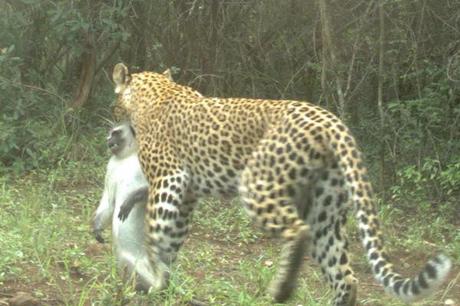
Our camera traps are recording evidence of leopards preying on primates, such as this vervet monkey. And analysis of hair contained in leopard scats collected in the area has demonstrated that leopards also eat baboons.
The ranging behavior of baboons, like that of many animals, is a result of a number of tradeoffs. For example, they must balance the need to find their next meal with the need to avoid becoming a meal themselves. One way in which we are investigating this process is by monitoring the temporal and spatial availability of food resources, but we have now also fitted GPS collars and proximity collars to some of the baboons and leopards of Lajuma.
The proximity collars that have been fitted to four members of the focal baboon study troop send signals over approximately 100 metres to a GPS collar that has been fitted to another member of the troop. The baboon GPS collar records the location of the animal and the signal strengths of the proximity collars, giving an index of group spread.
When they are within range of one another, the signals from the baboon proximity collars are also detected by the GPS collars that have been fitted to a number of leopards. This allows us to determine when and where collared leopards and baboons are in close proximity, and how this influences the group spread of the baboons. On days when we follow the baboon troop and collect behavioural observations, we can also get a much more detailed view of how the behavior of baboons may differ when there is a collared leopard nearby.
We have posted before on our work collaring carnivores, but we recently finished fitting collars to the focal baboon study troop, so we wanted to share with you some pictures of the baboon collaring. As the baboons are habituated, we were able to free dart them in order to fit the collars. We worked with a very skilled and experienced wildlife research vet, Dr Adrian Tordiffe of South Africa’s National Zoological Gardens.
Adrian casually follows the troop, concealing his dart gun as best he can. Sam, Tyler and other PPP researchers help Adrian to find a suitable target animal and to track it after it is darted.
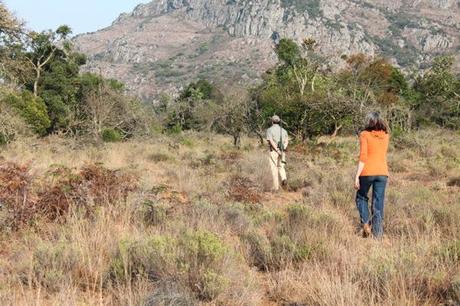
When the baboon is immobilised we fit the collar and collect morphological data and biological samples.
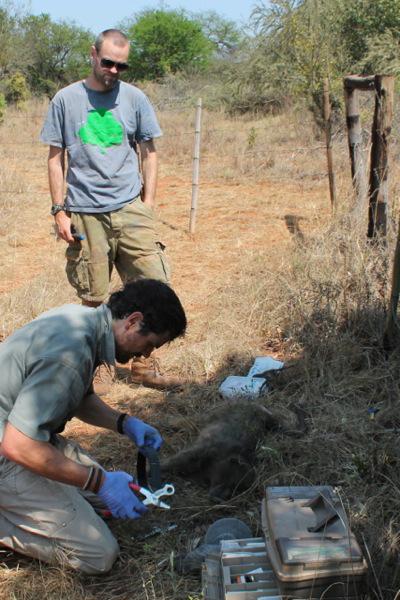
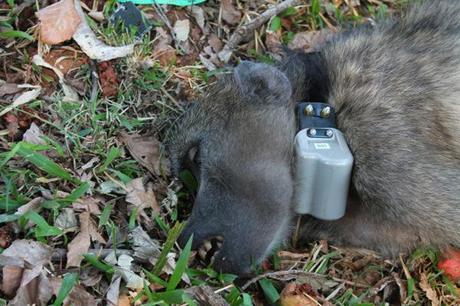

Adrian then administers the reversal drug and we put the baboon in a recovery crate on the back of the vehicle while it recovers. This means that by the time we release it back to the troop the anaesthetic has worn off completely, minimising the chances of it being injured due to the effects if the drugs.
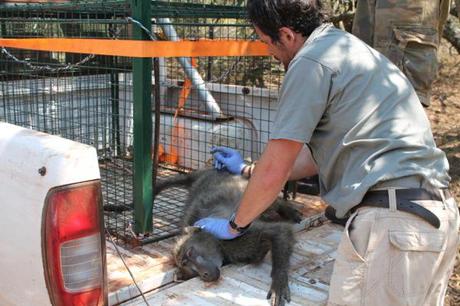
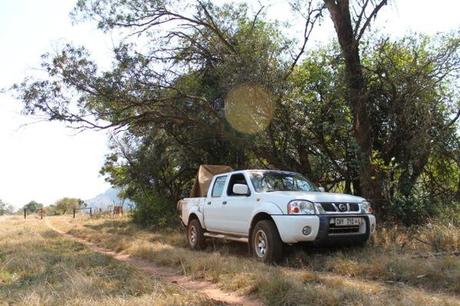
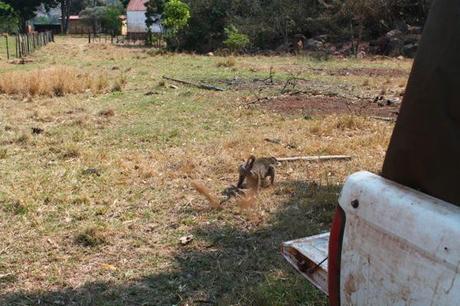
Here’s one we prepared earlier. Lobelia, the female that we fitted with a GPS collar in March is doing very well, and has since become pregnant and given birth to a healthy infant.
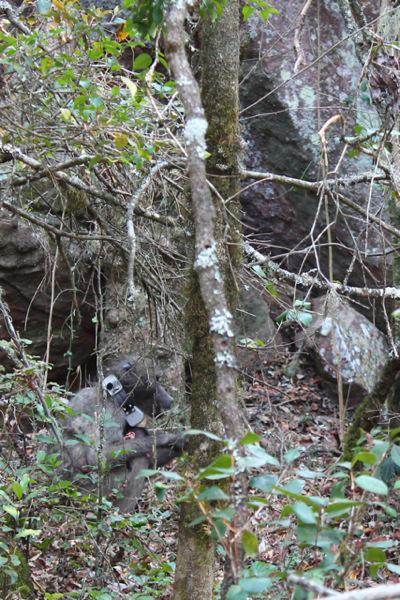
The hard work of the team is already paying off, and we are extremely excited that we have already started downloading records of the leopard collars coming into close proximity with the baboon proximity tags.
